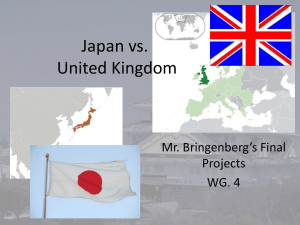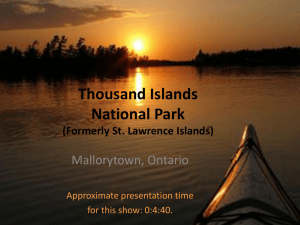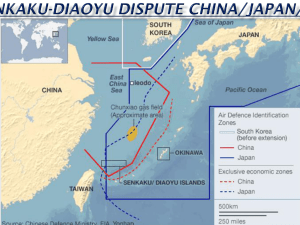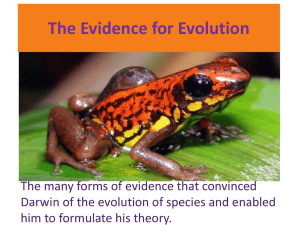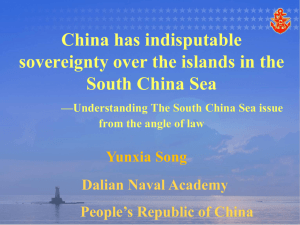zoogeography
advertisement
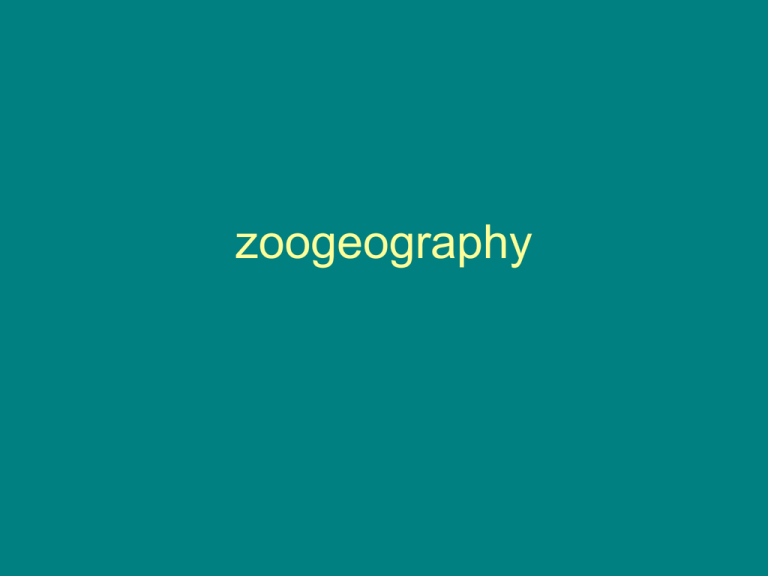
zoogeography What is the maximum range of an organism? Abiotic limits ; Temperature, oceans, mountains Biotic limits; competition, disease, predators? Distribution of all hummingbirds (a family distribution – speciation allows specialization within a region. North – too cold, short summer – how flowers pollinated Otherwise; oceans. Alfred Russell Wallace 18231913 Expansion along the mid-Atlantic ridge One plate moving under another – creates volcanoes, deep sea trenches Convergent evolution of body types, placentals vs marsupials. Continental drift helps solve the problem. Why no marsupials in Africa, India?? How to get from one place to another. 1. Land bridge – everyone crosses 2. Filter bridge – everyone crosses who has access to bridge (climatic, ecological 3. Sweepstakes routes –only a weird sample of things cross (things that have to cross a barrier – water – mountain, etc. Only 10% cross the Panama land bridge – why?? After crossing, the North American mammals are much more successful than the South American mammals. Why? Original South American mammaalian fauna – arose early and isolated for a long time. In a contest between two faunas, that have developed on separate continents, Who wins? -The one that has evolved the furthest (competed more) -The one from the larger land mass -The one that has faced the most competition, predators, changes, etc. Who came north? Opossum, armadillo, ground sloth. Who went south? Deer, dog, cat, elephant, camel (llama), Bear, otter, tapir, horse NOTE: opossum a good example of unpredictability. Why should such an odd animal be able to invade a continent with cats, dogs, weasels, etc, and survive?? Origins of South American Mammals Eocene: marsupial carnivores, insectivores ancient herbivores = Edentates, astrapotheres, etc.- came from Gondwanaland Oligocene: a rodent and a monkey show up; rafting from Africa Miocene - bears, cats, wolves, camels, deer, new rodents, rabbits, horses, weasels, raccoon family new carnivores outcompete marsupial carnivores. new herbivores outcompete ancient herbivores. The Bering land bridge. Bering Strait land bridge – a climatic filter. Going to America mammoth, sheep, goat, deer, bear, bison, cats Never cross Monkeys, sloths,; why? Gazelles, antelope, why? Going to Eurasia horse, camel, dogs “sweepstakes” method – cross a barrier How to recognize sweepstakes: only a few make it, those at shore, small, Perhaps arboreal. The Channel Islands of California; our Galapagos. Island terrestrial mammal fauna. Island fox, Plus two species of mice. pygmy mammoth Given a very few organisms, an odd assortment, how did they get there?? Sweepstakes; - swam across a barrier, or rafted What if the islands were once connected to the mainland – and since then have Become disconnected and gotten smaller. What would be the result? Can you tell the difference between the two??? On what information?? Islands as laboratories of evolution 1, Body size Why get bigger on islands (mouse) Ecological release = no larger competition. Why get smaller on islands? ( fox, elephant Why be large in the first place?? What is the best color for a rabbit?? Why?? What if no predators?? Then what is the best color?? Why do rattlesnakes have rattles?? How would you prove this? Why do birds fly?? Are there places where flying is detrimental and/or Unneccessary ? Top skeleton, snow goose. Bottom skeleton Flightless goose from Channel Islands. California desert Coreopsis- annual plant Channel Islands Coreopsis – perennial bush



